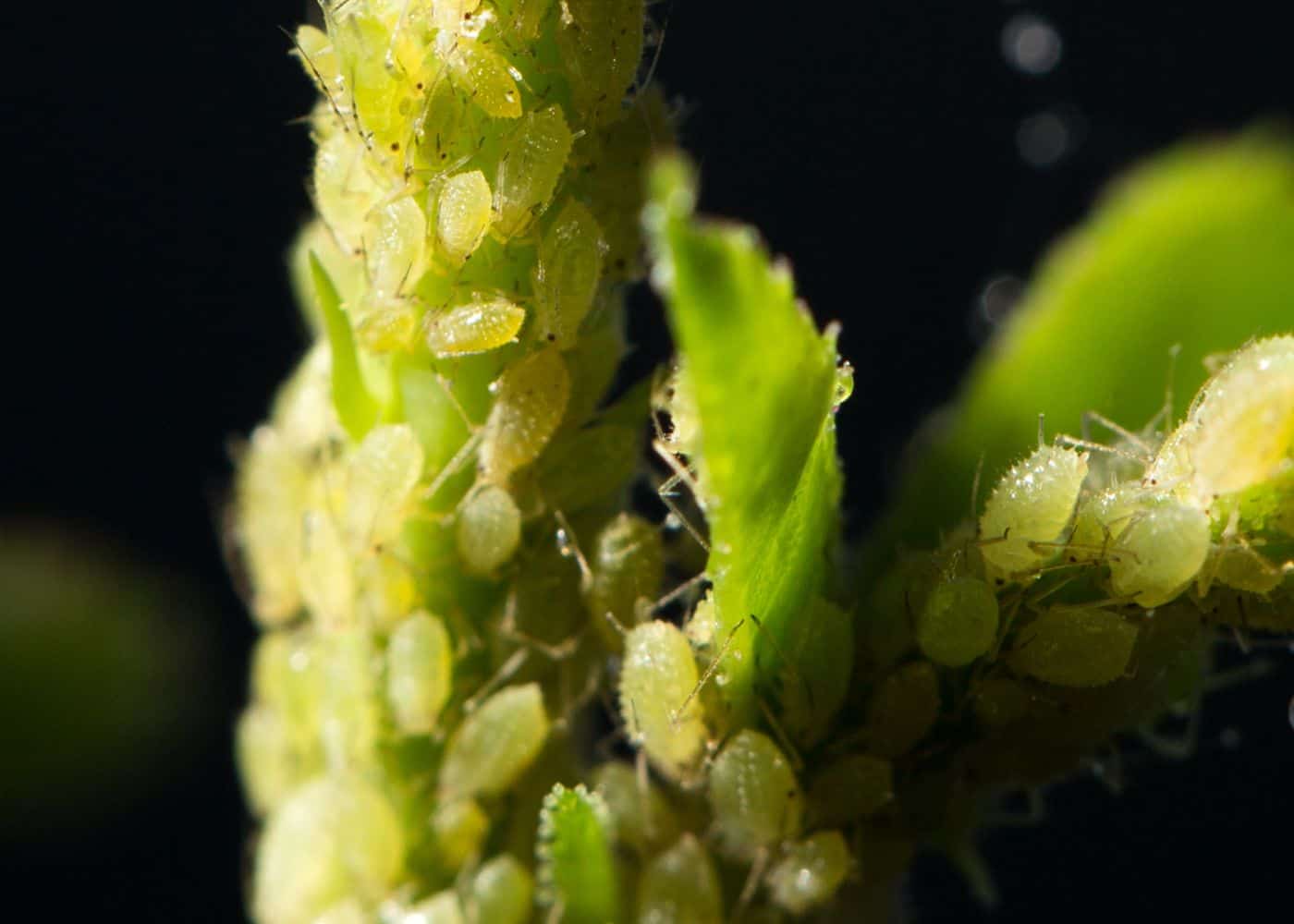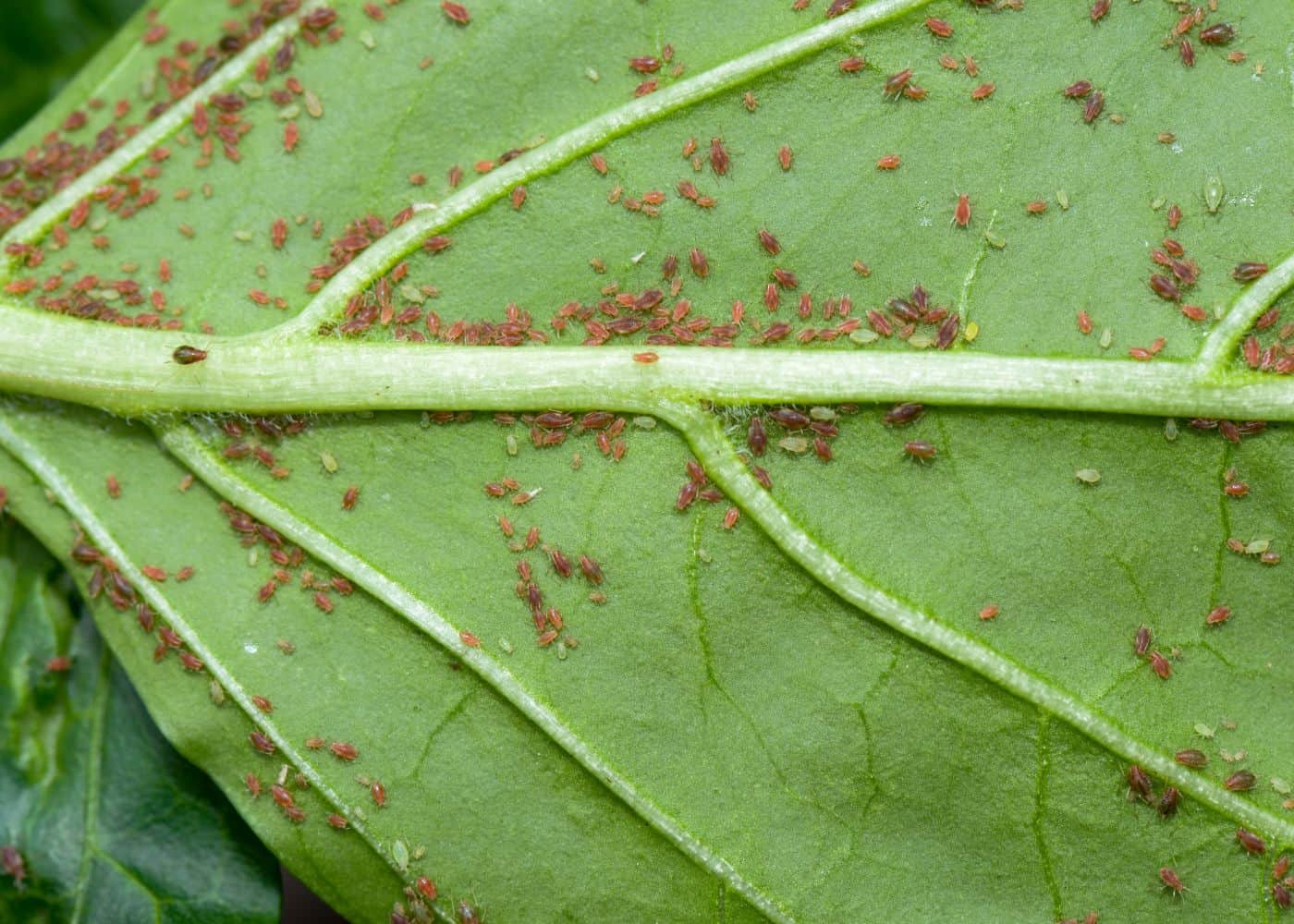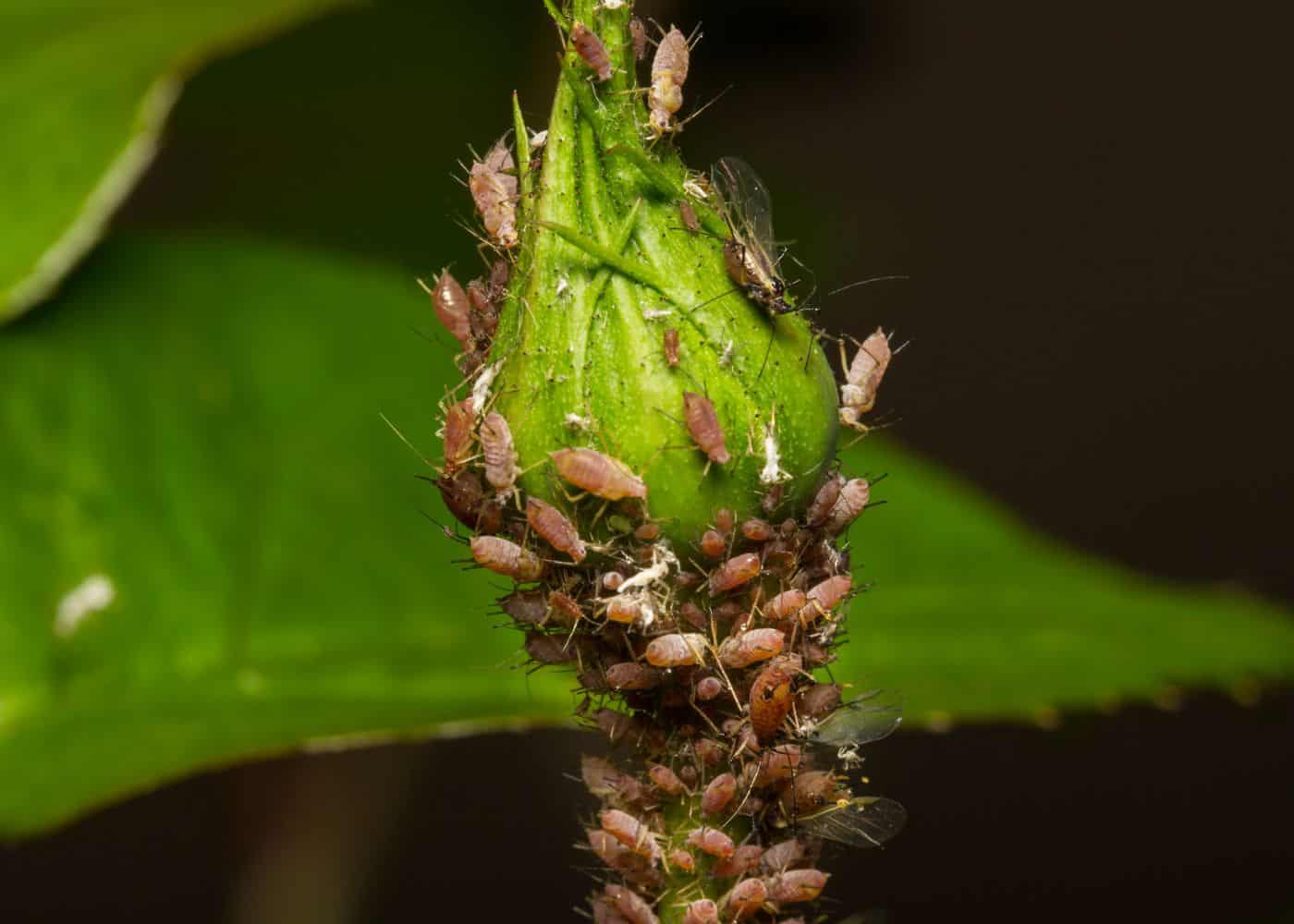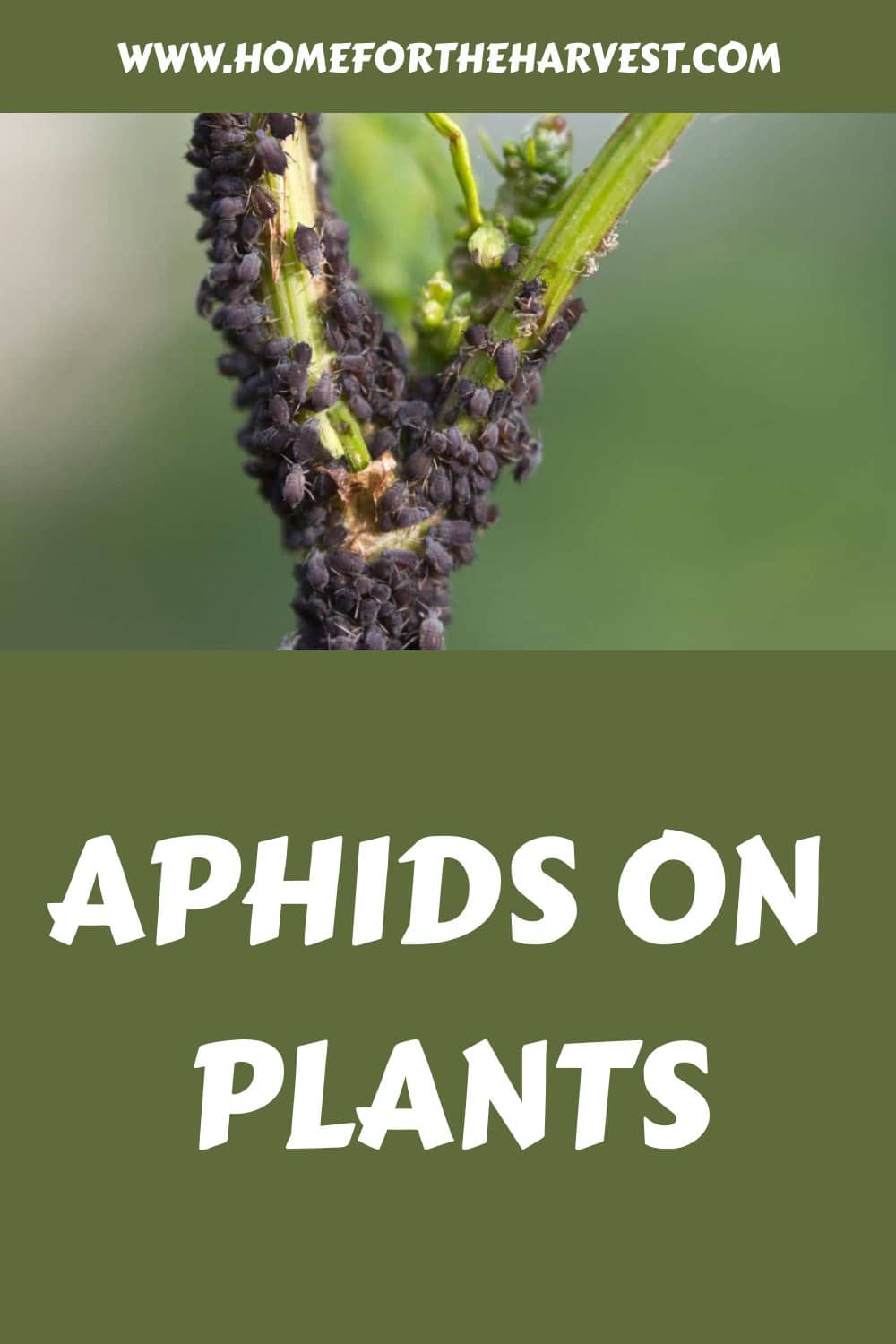One of the most common pests gardeners struggle with, especially in their vegetable patch, is aphids. Even the mention of their name will induce a sigh and eye roll from avid gardeners, myself included.
Aphids are sap-sucking pests that feed on the juices of plant leaves and stems. Aphids on plants spread rapidly and leave a sticky substance behind that attracts ants and mold. Stunted growth and deformed leaves are also signs of an aphid problem. Physical removal or chemical control will help tackle an infestation, but prevention is far better than trying to remove a problem once it has taken over.
What are aphids?
Aphids belong to a family of small sap-sucking insects and are among the most destructive insect pests, particularly in edible gardens. There are several species of aphids, varying in color from green to black.
These tiny creatures – so tiny that single bugs can be difficult to spot – settle in and feed on the juices inside plants, attacking leaves and stems. They also have an incredible rate of reproduction, rapidly expanding from a few bugs to an intolerable infestation.

What makes aphids so destructive?
As aphids draw sap out of leaves and stems, they damage the essential structures inside the plants. This leads to spotty growth, wilting, and even death in severe cases. They particularly love new and vulnerable growth and can quickly cause a once-thriving plant to become stunted and distorted.
Aphids also produce honeydew, a waste product left behind as they spread throughout the plant. This sweet substance is a breeding ground for sooty mold, another problem that can spread across the foliage of your plants, blocking out sunlight and inhibiting photosynthesis. As aphids jump from plant to plant, they can spread other diseases too, which can decimate vegetable gardens or flower beds.
Their rapid spread is part of what makes these plants so frustrating to deal with. I gave up on growing brassicas this year (including my favorite vegetable, cabbage) because I struggle to keep up with the aphid infestations that attack my plants before they even get started. If they hit at seedling stage, they are incredibly difficult to manage.

Signs of aphid infestation
Spotting an aphid infestation early, especially on young plants, is crucial for effective control. Once they get out of hand, these bugs can seem almost impossible to stop. That’s why it’s best to stay on top of pest management if you know aphids are a major concern in your area.
The first sign of aphids is not the bugs, as small infestations can be hard to spot if you’re not actively looking. Instead, it is usually the sticky honeydew they produce. You may notice a shiny, sticky residue on your plants or the surfaces beneath them, or even the ants that it attracts. Sooty mold can also appear – a black, powdery substance that covers leaves and stems.
Once the bugs spread, you will start to see the aphids themselves, congregating in large numbers on new growth. You will also see the damage they produce, including discoloration, holes in the leaves, and a general lack of growth.
Curling and yellow leaves, along with wilting, are also signs of a pest infestation. As a rule, if you notice anything out of the ordinary on your plants (particularly those most susceptible to aphid problems), it’s best to take a closer look.

How to remove aphids from plants
If you find yourself in the midst of an aphid infestation, it’s important not to panic or give up by removing the plants altogether. Aphids can often be removed, especially in the early stages of infestation, by following a few essential steps.
The first is simply to remove them by hand. For mild infestations, a strong stream of water from a hose can knock aphids off plants. This won’t get rid of them completely, but combining this step with prevention methods can protect your plants from major infestations. If you have a lot of time on your hands and aren’t squeamish, you can also pick the individual bugs off the leaves.
For larger colonies, insecticidal soap or horticultural oil are usually the first products gardeners reach for. These are excellent natural options safe for most plants (be sure to check which is best for your chosen plants before spraying). Spray the mixture directly onto the aphids to kill them and then wash them off with water. Ensure you coat both the tops and bottoms of leaves to avoid missing any that are hiding.
Some gardeners also try homemade insecticides to suffocate the bugs, like solutions of dish soap and water. However, for larger infestations, these may not be as effective as products designed to target aphids.
Ladybugs and lacewings are also natural aphid predators. You can introduce them to your garden as a form of biological control, or attract them to your backyard by planting things they like near susceptible vegetables.

How to prevent aphids from attacking plants
The phrase ‘prevention is better than cure’ may be overused, but in the case of aphids, it’s certainly true. Protecting your plants and making your garden less attractive to aphids is far easier than trying to remove an infestation once it has settled in. You only need to look at the last remnants of my cabbages for evidence.
The first step is something you should be doing anyway – keeping plants healthy and happy. Aphids are attracted to plants under stress, so regular watering, feeding and pruning can help keep these pests at bay.
Companion planting can also be effective, especially when there are several plants in your garden prone to aphid problems. Marigolds, garlic, and chives are believed to repel aphids and make great pairings for many edible and ornamental plants.
But the most important step in prevention is keeping a close eye on your plants. Regularly check them for signs of aphids, especially if they have been recently planted or are producing new and vulnerable growth. Early detection is the best way to stop a small problem from becoming a big one.







